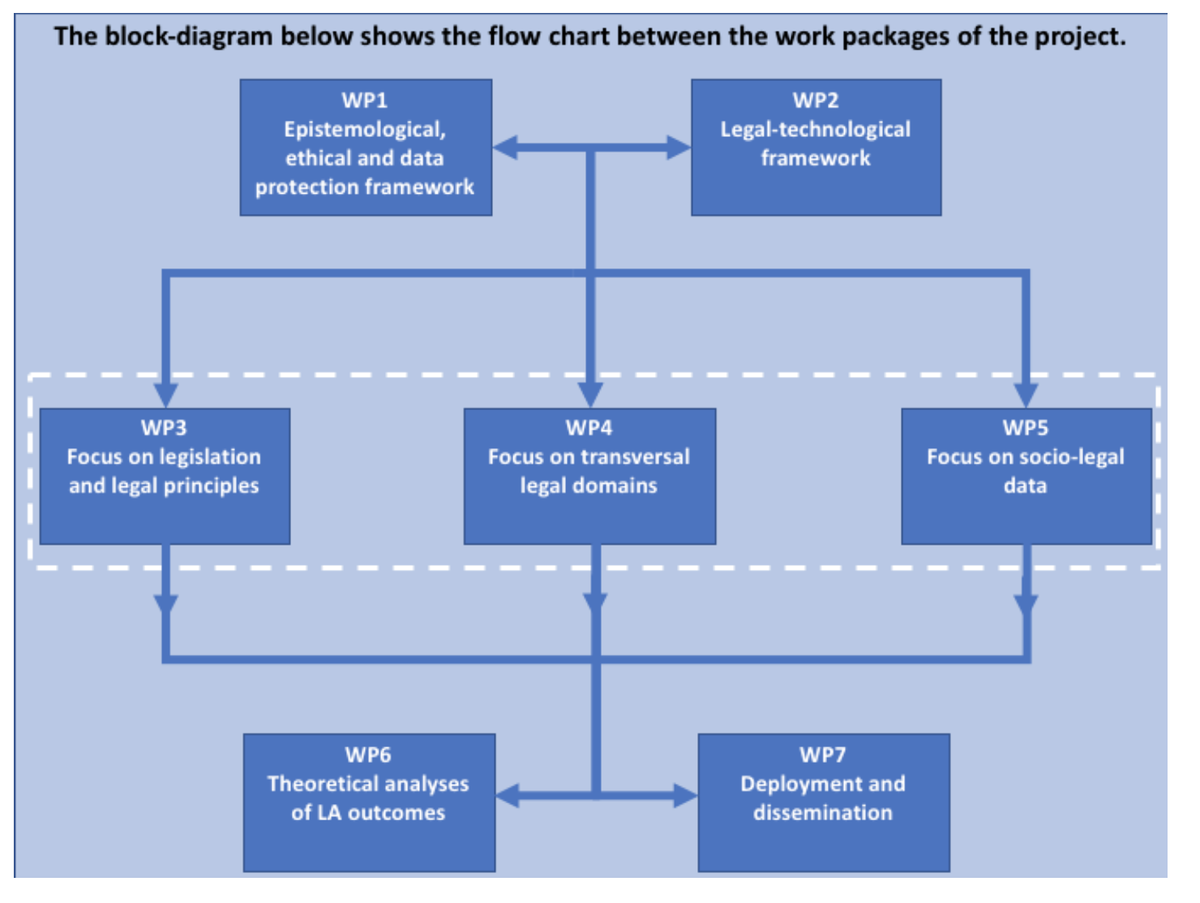LAILA (Legal Analytics for Italian LAw) is a project funded by MIUR (Ministry of Education and Research) which has three main objectives:
1) To apply, refine, and develop technologies for LA. This includes:
a) Applying analytics technologies—including supervised, semi-supervised, and unsupervised learning—for the following purposes: ontology building, classification of legal documents, analysis of legislation, analysis of case law, extraction of “massime” (rationes) and principles, question-answering, and prediction of trends and decisions. Test applications, and corresponding evaluations, will concern large sets of legal sources, and selections of socio-legal data, including Italian legislation, the case law of the Court of Cassation and lower courts, decisions of the Italian Data Protection Authority (Garante), parties’ documents produced in legal cases, and the corresponding socio-legal data.
b) Refining and developing LA technologies, taking into account the peculiarities of the Italian legal system and language. In particular, we shall combine LA on English and Italian texts, using existing multilingual repositories, apply LA to annotated legal document, and combine LA methods with the logical representation of legal knowledge.
2) To provide methodological analyses and guidelines for the efficient and ethical deployment of LA technologies. This includes:
a) Reviewing the capabilities and limitations of current LA technologies and identifying risks and mitigations.
b) Providing ethical and legal guidelines, specifying how to deploy LA for different purposes (classification, analysis, prediction, etc.), while complying with law and ethics and preventing any risks of adverse effects (biases, unfairness, etc.).
3) To expand the understanding of the structure, logic, and dynamic of Italian law in its connection with EU law, using LA tools. This includes:
a) The linguistic, conceptual, and logical structures of Italian legislation and case law, and of their evolution.
b) The network of multiple connections between different legal sources, of the resulting emerging influences, constraints, commonalities, and differences, in a multilevel framework (also including EU law).
c) The correlations between social factors and legal sources and decisions.
Here below more details about project articulation per workpackages. Go to the Agenda to check out project timeline and milestones.
